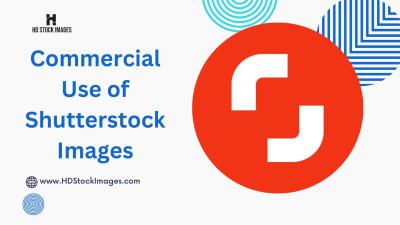Shutterstock is one of the biggest names in the world of stock photography, offering millions of high-quality images, videos, and music tracks for creative projects worldwide. Whether you’re a designer, marketer, or content creator, Shutterstock provides a treasure trove of resources to make your work stand out. But here’s the catch — while many images are free or low-cost, the premium content, which often includes exclusive and high-resolution assets, typically requires a subscription or one-time purchase. This makes many users curious about how they might access these premium treasures without breaking the bank. Today, we’re exploring that topic with honesty and clarity.
Understanding the Risks of Unauthorized Access
Now, before you get any bright ideas about finding ways to access Shutterstock’s premium content for free, it’s super important to understand the risks involved. Using unauthorized methods to access premium content isn’t just a gray area — it’s often illegal and can lead to serious consequences. Here’s what you should keep in mind:
- Legal Issues: Downloading or using copyrighted content without proper authorization violates intellectual property laws. This can lead to lawsuits, fines, or other legal actions.
- Malware and Security Threats: Many shady websites or files claiming to offer free Shutterstock content are actually malware traps. Downloading from untrusted sources can compromise your device and personal data.
- Account Risks: Trying to hack or bypass Shutterstock’s systems can result in account suspension or permanent bans, making it impossible to access any content legally in the future.
- Ethical Considerations: Creators and photographers spend time and effort producing quality content. Using their work without permission not only harms them financially but also undermines the creative industry.
Instead of risking these pitfalls, consider legitimate ways to access premium content affordably or for free through official channels, discounts, or free trials. There are many legal and safe options that respect the rights of creators while helping you get the resources you need without jeopardizing your security or reputation.
3. Legal Ways to Obtain Shutterstock Premium Content at No Cost
Let’s be honest—who doesn’t love getting premium content without spending a dime? While Shutterstock’s premium images are usually behind a paywall, there are some legit ways to access them for free, without risking copyright issues or getting into trouble.
1. Take Advantage of Free Trials
Many stock photo platforms, including Shutterstock, offer free trial periods. During this time, you can download a certain number of images at no cost. It’s a perfect way to get high-quality images for your project, especially if you only need a few pictures. Just remember to cancel before the trial ends if you don’t want to be charged.
2. Sign Up for Newsletters and Promotions
Sometimes, Shutterstock or related design platforms send out special promotions or free image bundles to their subscribers. Signing up for their newsletters can keep you in the loop about such offers. You might receive free credits or access to exclusive images as part of a promotion.
3. Participate in Contests and Giveaways
Keep an eye on social media and design communities—many times, brands or Shutterstock itself run contests where winners get free access or premium images. It’s a fun way to potentially score some high-quality visuals without any cost.
4. Use Creative Commons and Public Domain Images
While not directly Shutterstock content, many free image repositories host high-quality images that are legally free to use. Websites like Unsplash, Pexels, and Pixabay offer stunning visuals that can sometimes match the quality of Shutterstock’s premium images. Just double-check the licensing to ensure proper use.
Remember, always respect copyright laws. Using images without proper licensing can lead to legal trouble or your content being taken down. The key is to look for legal, free options and take advantage of trials and promotions offered by reputable sources.
4. Using Free Alternatives for High-Quality Stock Images
If you’re on a budget or just looking for great images without the hassle, there are plenty of fantastic free alternatives to Shutterstock’s premium content. These sites have grown in popularity because they offer high-quality images that are free to use for personal and commercial projects.
Popular Free Stock Image Sites:
| Website | Highlights | Licensing |
|---|---|---|
| Unsplash | Thousands of high-res photos from talented photographers | Free to use for commercial and personal projects, no attribution required (though appreciated) |
| Pexels | Beautiful, curated collection of free stock photos and videos | Creative Commons Zero (CC0) license – free for any use |
| Pixabay | Large library of images, illustrations, vectors, and videos | CC0 license, no attribution needed |
These sites are a game-changer because they offer top-notch visuals without the costs. Plus, they’re easy to browse, and you don’t need to worry about licensing issues as much as with some other sources.
Tips for Using Free Stock Images:
- Check licensing: Make sure the images are free for commercial use if that’s what you need.
- Give credit: While most sites don’t require attribution, it’s a nice gesture to credit photographers when possible.
- Be selective: High-quality images make your content look professional, so take your time choosing the best ones.
- Customize images: Use editing tools to add your personal touch or fit images perfectly into your project.
In short, these free resources are a fantastic way to elevate your content without breaking the bank. Whether you’re creating a blog, social media posts, or marketing materials, you’ll find plenty of stunning visuals to make your project stand out.
5. Tips for Finding Free Stock Photos and Videos Online
Looking for high-quality stock photos and videos without breaking the bank? You’re in luck! There are plenty of resources out there offering free content that can elevate your projects without costing a dime. Here are some handy tips to help you find the best free stock content online:
- Use reputable free stock websites: Platforms like Unsplash, Pexels, Pixabay, and Videvo are well-known for offering a vast array of free, high-resolution images and videos. These sites often curate their collections carefully, ensuring quality and legality.
- Check the license details carefully: Even on free sites, licensing varies. Read the licensing terms to confirm that you can use the content for your intended purpose—whether personal, commercial, or editorial. Many free sites offer content under Creative Commons Zero (CC0), meaning you can use, modify, and distribute without attribution.
- Utilize advanced search filters: Most free stock platforms have filters for orientation, color, size, or specific categories. Using these helps narrow down your options and find exactly what fits your project.
- Explore social media communities and forums: Sometimes, talented photographers and videographers share free content directly on platforms like Instagram, Reddit, or specialized forums. Just ensure you verify the source and licensing before downloading.
- Leverage search engines smartly: Use Google Images with usage rights filtering (Tools > Usage Rights > Labeled for reuse). This way, you can discover free-to-use images across various websites, but always double-check the source for legitimacy.
- Join online creative communities: Platforms like DeviantArt, Flickr, or 500px often have sections dedicated to free downloads. Engaging with these communities can also lead you to exclusive resources and tips from fellow creators.
Remember, while these tips will help you find fantastic free content, always respect the creators’ rights and licensing terms. Proper attribution isn’t just polite—it’s often a legal requirement. With a little effort, you’ll be amazed at the wealth of free, high-quality stock photos and videos available to bring your projects to life.
6. Conclusion and Best Practices for Using Stock Content Legally
As you dive into using stock photos and videos—whether from free sources or premium services like Shutterstock—it’s crucial to keep legality and ethics in mind. The last thing you want is to face copyright issues or damage your reputation because of careless usage.
Here are some best practices to ensure you’re using stock content responsibly and legally:
- Always verify licensing terms: Before downloading or using any stock media, double-check the license. Look for clear indications whether attribution is required, if commercial use is permitted, or if the content can be modified.
- Respect attribution requirements: If the license asks for attribution, give credit where it’s due. A simple acknowledgment in your project or credits section can save you from legal trouble and shows respect to creators.
- Use content within the scope of its license: Don’t attempt to use free or purchased stock content for purposes outside the license—like reselling images or creating merchandise unless explicitly allowed.
- Maintain records of licenses and sources: Keep documentation of where you sourced the content and its licensing terms. This can be helpful if questions arise later.
- Avoid stock content from dubious sources: Stick to reputable sites and verified creators. Avoid downloading content from unknown or suspicious websites that may host copyrighted or malicious files.
- Be cautious with derivative works: If you modify stock images or videos, ensure that the license permits such alterations. Some licenses restrict derivatives or require specific attribution.
- Stay updated on copyright laws: Laws can change, and licensing terms can be updated. Regularly review the terms of the platforms you use and stay informed about fair use policies.
Using stock content wisely ensures your projects remain legally sound and ethically responsible. It also fosters good relationships with creators and the creative community at large. Remember, the goal is to enhance your work while respecting the rights of those who produce the content you love. Happy creating!



